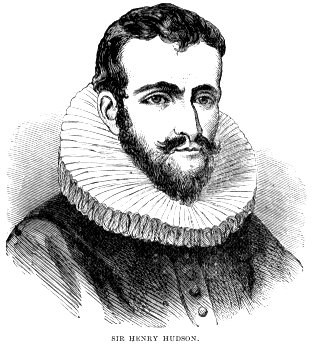The Fulkerson Family Pages
New Amsterdam is too often overlooked or overshadowed in American colonial history — by the earlier Virginia settlement which gave birth to the Southern plantation economy, and by the Massachusetts Bay Colony which bred religious extremism that rivaled today's most radical sects.
New Amsterdam, in fact, contributed far more to the American culture than either of them. New Amsterdam gave us bowling, Christmas and New Year celebrations, cookies, cole slaw, the first organized church in America, ice skating, log cabins, magicians, pancakes, property ownership for women, public education for both sexes, religious tolerance, the right of dissent, the rule of law, street paving, and tennis.
Dutch New Amsterdam, showing a shipyard crane (center) on the East River.
Commentary authored by Bob Fulkerson, from his site Fulkerson.org, with edits and added info and links in 2016.
Dirck de Noorman, A Founding Father of New York City
Settlements Along the Hudson
In 1609, the Hudson River Valley (though in the early days of settlement, the waterway would be called the Mauritius River) had been discovered by Henry Hudson, an Englishman sailing for the Dutch East India Company. He had heard of the fortunes of French men, venturing to Newfoundland to trade for furs (mostly beaver) from the natives.
Commanding the Halve Maen and departing England in April, Hudson had been assigned by the Dutch East India company to sail north of Russia to Asia, but he found his passage blocked by ice. Having heard rumors of a northwest route to the Pacific through North America while he was in Amsterdam, near Norway's north cape, Hudson pointed the ship west, reaching Nova Scotia in July, assaulting and robbing the French settlement there.
in August Hudson approached Cape Cod. He continued moving along the coastlands, passing the Chesapeake and Delaware bays, and traveled into the River which Hudson named the Mauritius River (after Prince Maurice of Nassau), which we now know as the Hudson. Henry Hudson had not been the first to explore these waters--he was preceded by Giovanni da Verrazzano in 1524, who did not proceed up the waterway, but who mistook the entrance to what is now called the Hudson River as being a large lake.
After Hudson, in 1610 Symen Lambertsz Mau launched an expedition out of Monnikendam. Unfortunately, the ship under Mau's command sank in the Hudson.
One genealogist's research proposes that, following Mau's tragedy, a group of Lutherans comprising the Van Tweenhuysen Compagnie sent the St. Pieter, piloted by Cornelis Rijser in 1611. Hendrick Christiaensen was next to arrive on his ship Fortuyn in 1612, with Adriaen Block in his Tyger arriving in the same year.
Henry Hudson, Explorer, Ship's Captain
On October 11, 1614, Block, Christiaensen, and a group of twelve other merchants presented to the States General a petition to receive exclusive trading privileges for the area. Their company, the newly-formed New Netherland Company, was granted exclusive rights for three years to trade between the 40th parallel north and the 45th parallel north.
Meanwhile, in Leiden (also spelled Leyden) Walloons, Huguenot Protestants who joined with each other in certain concentrated areas in an attempt to escape persecution from Catholics, had begun to consider the plan in 1621 of Jessé de Forest, who at first joined with thirty Walloon families to sign a round robin petition to an English emissary at the Hague seeking permission to settle in Virginia, but unfavorable conditions imposed upon the plan caused him to abandon the idea. On 27 August 1622, in documents of the acts of the councillors at Leyden, permission to emigrate from Holland was granted Jessé de Forest.
Ultimately, Jessé de Forest's plans for a Dutch West India Company would dovetail with those of the New Netherland Company launched by Adraien Block (although de Forest hoped to found New Belgium), so that the Walloons would finally receive permission from Holland to emigrate to the new territories on the other side of the path of Henry Hudson. Sadly, though, on reconnaissance on an earlier voyage prior to the planned expedition, de Forest died on the shore of a river near the border of Brazil and Guyana. His children Rachel, Isaac, and Henri would not arrive in the new territory until ten years later.
According to a story about Sarah Rapalje, her recently married parents were among the first Walloons in New Netherlands who arrived on the Eendracht (Unity), sailing from Amsterdam on January 25, 1624 to New Netherland in March 1624, landing at Fort Orange in what is known today as Albany, New York.
Adriaen Block compiled a map of his voyage. The Block map was the first to apply the name "New Netherland" to the area between English Virginia and French Canada, as well as the first to show Long Island as an island. These explorers founded the trading posts which would first be called Fort Nassau, later rebuilt a bit north of the former site as Fort Orange, named in honor of the Dutch dynasty of Orange-Nassau.


